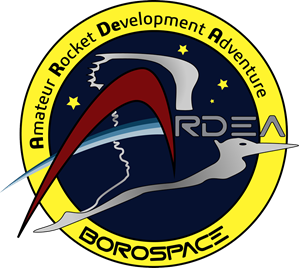 The ARDEA (Amateur Rocket Development Adventure) project aims to develop light and affordable small rockets for scientific and commercial usage. The ARDEA rockets are designed with hybrid engines, which combine the advantages of liquid-propellant and solid-fuel propulsion systems. While using hybrid rocket engines (as compared to other type of chemical rocket engines), there can be no explosive reaction between fuel components, as of their various physical state of the fuel and the oxidizer. This engine is in general extremely safe for usage and production. The construction of a hybrid unit allows an effective control of engine thrust while preserving a relatively simple construction and technological availability.
The ARDEA (Amateur Rocket Development Adventure) project aims to develop light and affordable small rockets for scientific and commercial usage. The ARDEA rockets are designed with hybrid engines, which combine the advantages of liquid-propellant and solid-fuel propulsion systems. While using hybrid rocket engines (as compared to other type of chemical rocket engines), there can be no explosive reaction between fuel components, as of their various physical state of the fuel and the oxidizer. This engine is in general extremely safe for usage and production. The construction of a hybrid unit allows an effective control of engine thrust while preserving a relatively simple construction and technological availability.
Hybrid rockets are an open direction of orbital and suborbital launchers. The big space agencies so far preferred the development of massive rockets based on solid or liquid-propellant systems. These launchers are, however, difficult to construct and demanding on ground infrastructure and staff. High costs are the main obstacle of a more effective civil space exploitation. Nowadays, there is a rising demand of affordable launchers for small satellites and suborbital scientific experiments. The ARDEA project is therefore a very perspective project, with a high multiplication factor for further development of technologies and scientific research in Slovakia.
More than 30 successful burns were performed on VÚPCH Pardubice- Semtín. Like the engine for Space Ship Two, it uses liquid oxidizer (nitrous oxide), which is due to its accessibility as well as physical and chemical properties the most suitable choice for private developers. Solid-state fuel is wax or a mixture of 60% wax and 40% aluminium powder – this combination is in theory able to deliver a specific impulse more than 2300 Nskg-1 to the rocket, while average pressure in the combustion chamber is around 3.5 MPa (in contrast, the SpaceX’s classical liquid-propellant engine Merlin1C delivers 2660 Nskg-1 at sea level). In comparision to HTPB (a type of rubber similar to tyre rubber) fuel, which is used in Space Ship One/Two engines, wax is much cheaper creates less smoke when burning and burns 3 to 5 times faster, which results in an easier geometrical shape of the solid fuel. A special type of wax with structural improvement is used in our engines, so it can withstand high stress loads during the functioning of the engine. Therefore, as soon as some technical problems linked to N2O properties have been successfully managed, the usability and technological outreach of ARDEA rockets could extend the borders of pure amateur research.
Before I continued the description of the project, it was probably appropriate to clarify the designation of each type of rocket that was being prepared, why it was going and what we would expect from it. Since the beginning of the project, there have been some changes and changes in priorities during development (probably depends on the funds, material and technological requirements and especially on our options). So, briefly, what is the main role of the project, its main vision and what market in the space business is aimed at:
- It is a question of our prestige, as Slovakia – to reach the boundary of the space by our own means (height 120km – above Karman-line)
- Due to mobility and start-up costs, we will concentrate on smaller weighing vehicles with a payload up to 10 kilograms (measuring, scientific payload and other instruments) for high-atmosphere probes and some experiments in microgravity or aerodynamic testing
- The development of the rocket design is clearly aimed at the use of modern composite materials and technologies, both in the one-off use of rocket motors (boosters) expendable approach, but also reusable, ie. Reuse of the entire rocket to dramatically lower the start price.
- The reduction of geometric dimensions and rocket launch weight necessitates the use of new constructive philosophies and approaches – for example, the development of unique technology for the production of the entire rocket engine in virtually one complex form(mould) mainly aims at eliminating various screw, glue and other joints to reduce the dead weight of the rocket will increase overall system reliability. On the other hand, lowering the construction, assembly, and less important human factor when using such a production system in larger series and will be able to secure a lower price for the propulsion system.
- From the beginning we avoid the use of dangerous chemical substances or phlegmatized pyrosubstances, respectively, explosives (eg, solid fuel grains) – therefore the choice fell to a combination of wax / N2O. Although this combination has a lower density specific impulse, these deficiencies are compensated by relatively safe manipulation and production of a solid fuel – a wax which is an inert mixture of various paraffin additives. This combination significantly reduces the cost of developing a given propulsion unit and, in particular, it is the so-called “green propellant”, which will increasingly affect the exploitation of research equipment mainly in the European area. The lower impulse of the system will be compensated by a thoughtful design with the lowest possible construction weight.
- The multifunctionality of some parts will also be a key issue for reducing the weight of the construction – for example, the main valve will be responsible for filling, delivering of oxidizer (N2O) into the combustion chamber of a hybrid engine and will also have the role of a drainage, safety valve and what is particularly important – will be able to pressurizing the main tank with the oxidant via additional pressurizing gas, such as, for example, gaseous oxygen, helium, or compressed nitrogen. Upon leaving the given rocket from the launcher, the multifunction valve of the given pressure hose will be able to discard the missile body to avoid unforeseen collisions with the launch of the rocket with the launch rail
- And last but not least, we will try to develop rocket control systems, maneuverable return vehicle, which then result in the development of fully reusable suborbital rockets.
But to achieve these goals, step-by-step action is to be taken, to learn from the developments of previous systems, and always to try something new, which will this project move forward. Three types of demonstration rockets are currently being prepared, each with a specific task – see Figure 1.

Fig.1 – Overall view of the Ardea family – Ardea Zero, A1 and A2 test rockets
Ardea Zero
The concept of the rocket has changed frequently, according to the results of the development and the momentary possibilities. In the summer of next year, a rocket will be launched – it will include a special multifunctional valve that will test all the basic operations for the first, hopefully a successful flight. The AZero rocket propulsion unit is based on previous statical tests at the Pardubice-Semtin test facility. Total weight of hybrid fuel of about 1kg and rockets of about 6kg – see Fig.2. The overall view of the top of the given multifunction valve and its parts are shown in Fig.3. Although it has practically 7 functions, its weight is relatively low – about 450g. First ground tests will be preceded by ground tests such as pressure tests, functional CO2 testing (similar to N2O at molecular level), and ultimately a static test on the launch rail. Rocket has max. diameter 60mm and length 2100mm.
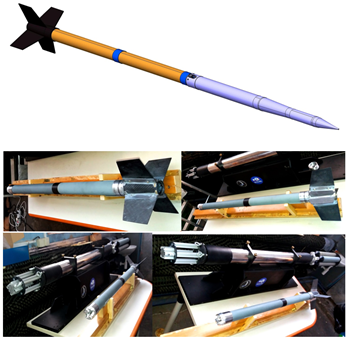
Figure 2 – General view of the Ardea Zero test rocket – the main body of the multifunction valve is located at the front of the rocket, with a parachute and forehead installed (the A2 propulsion unit is in the background).
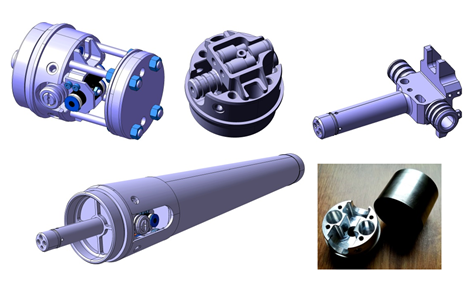
Figure 3 – View of the main assembly of the multifunctional special valve for filling the rocket with N2O oxidant, starting the engine, venting the tank, holding the prescribed pressure, filling with compressed gas (eg GOX, He, N2). At start, the feed hoses for the media are automatically discarded from the body of the missile.
Ardea One
Next development stage of the Ardea project. The new test element is a 8 l tank for N2O oxidizer from aluminum alloy overwrapped with pre-stressed carbon fiber – a product of Carbon Technic s r.o. from Pezinok – see Fig. 4. The same propulsion concept concept as with Ardea Zero, but in bigger scale. The main multifunctional valve from the previous development. The diameter of the combustion chamber is 86 mm. A novelty will be the use of some turbulisers in the combustion chamber for combustion product turbulence – for better and more efficient use of wax fuel. Another novelty will be a new internal support structure for holding wax on internal insulation walls. A separate combustion chamber from aluminum alloy is also related to the requirement – see Fig. 5.
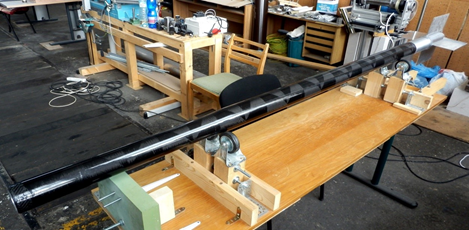
Fig. 4 – assembly of the rocket A1 on the mounting table. In the foreground, the tank for N2O is wrapped with carbon prepreg, in the background is the combustion chamber (top right).

Figure 5 – 3D model of a splitted Ardea 1 combustion chamber for the production and assembly. The chamber will contain approximately 1 200g of wax fuel. There is a well-visible support system of four rocket stabilizers and a place for a graphite nozzle on bottom side.
Preliminary computational analysis of flight trajectory flight A1 shows roughly 10km max. apogee, max. speed about 600 ms-1. It is true that the performances are preliminary, everything will depend on the real starting weight, the actual aerodynamic drag, and the real thrust curve of the rocket engine. The results are graphically showed on Fig.6.
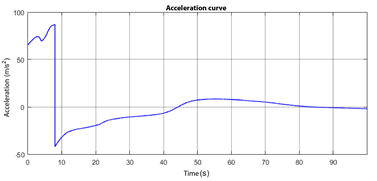
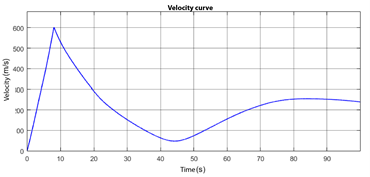
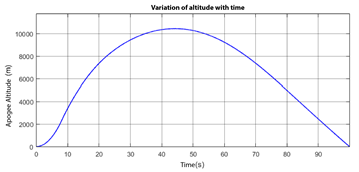
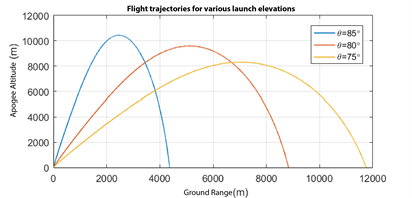
Figure 6 – Ardea 1 missile acceleration, velocity and trajectory (source: © B.Nagy2017)
Ardea Two
Ardea 2 will be a rocket already practically in the real-size of the final A3 rocket to 120 km (as mentioned, the numbering of the missile’s development program is shifted by one number further, due to the insertion of a further test flight A1 to test the effect of the scale on fuel burning laws 50mm (AZero), 80mm (A1), and finally, 150 and 300 mm final rockets).The final body of the rocket will be composed from three parts (a 120 degree cut-out) from the five layers of the twill prepreg with a weight 200g/m2, and stabilizers are reinforced with a honeycomb shaped polyamide structure to improve the stability to prevent buckling of relatively large areas of stabilizers. The entire body of the rocket will be reinforced with an additional internal skeleton, which will also have a significant effect. It can be said that Ardea 2 is conceived as a large rocket model, which will include various hybrid rocket motors (they will have a smaller diameter than a rocket shell). The whole body of the rocket with an aluminum alloy parachute bay and a carbon fiber forehead will have a final weight of about 9kg, which for the missile with a 150mm diameter fuselage and 4500mm length is very good performance (even without a propulsion unit). For the final A3 booster, using a special pressurized and tempered mold, the expected mass of the fuel-free construction is roughly on the same level (that is, with the empty engine!). We plan to produce two bodies of the A2 rocket. In order to achieve the lowest possible weight of the structure, for example, the parachute container is relieved by milling the longitudinal grooves on the peripheral wall – see Fig.7.
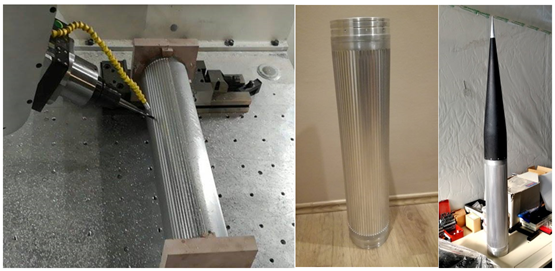
Figure 7 – Milling of grooves on the parachute aluminum alloy container for the Ardea 2 rocket on the 5-axis CNC milling machine – about 800g of material was saved.
We had some problems with the stability of the carbon mould for the production of fuselage for the rocket – that is why the mold was modified using a stiffer steel frame on wheels with longitudinal Al – grooved profiles – see Fig.8. This arrangement allows for better mold mobility for the curing process itself in the autoclave and the transfer between the departments in the manufacturing company. Great emphasis must be placed on the air-tightness of the mold, which is a requirement for high quality parts.
The finished rocket Ardea Two’s body was exhibited on “Researchers Night 2017” in Bratislava – see pic.9.
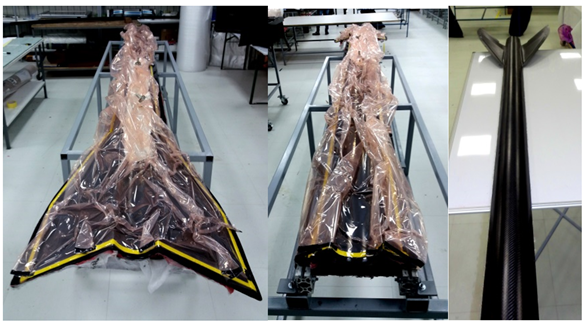
Figure 8 – CFC mould manufacturing and additional reinforcement for mobile carriage of the mold for use in the autoclave (courtessy of C2i ).
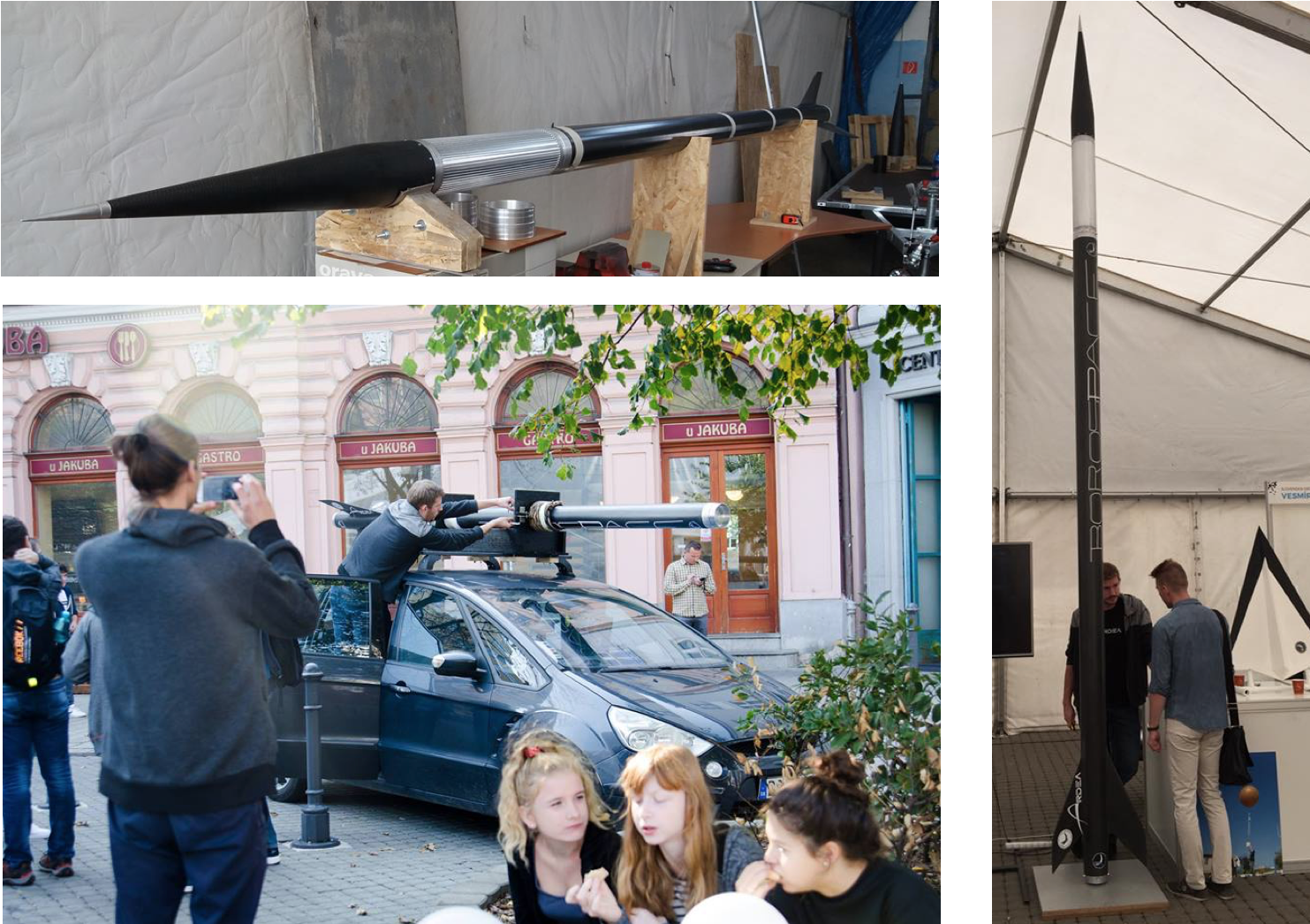
Fig.9 – Ardea Two rocket. Bratislava 2017.
Ardea two concept is described in animation here:
Ardea Three
It is the target version of the suborbital rocket to reach a height of 120km altitude above the Earth’s surface. This version of the rocket will be partially reusable for lower cost(the booster will be expendable, all valves and high-pressure GOX tank for pressurizing of oxidizer tank and for delivering oxygen for small hybrid rocket engine in combustion chamber will be situated in forehead of rocket and will be reusable). Safety will be prime importance – such as the manufacture, assembly, transport and operation of a given rocket – therefore, the combination of special wax and nitrous oxide (N2O) as an oxidant will be used. Another additional medium used will be compressed oxygen mentioned above, which will both assist the dispensing of the oxidant into the combustion chamber and secondly for the secondary injection of the gas to ensure a stable combustion of the fuel in the combustion chamber. This approach will also ensure a higher specific impulse of the propulsion system. The re-entry of the forehead will use an innovative return system – the falling rocket’s forehead will use a configuration with maximum aerodynamic drag, thereafter gliding flight with control and landing through a classic parachute system. Since the first versions of the sounding rocket will not be controlled, the given return system will compensate for lateral variations and the effects of various atmospheric influences. The rocket’s maximal apogee may range from 70 to 150 km, with a payload (scientific payload) 3 to 10kg, according to the required flight trajectory. The desired area is unattainable for balloons (up to 50km) and satellites (higher than 160km). The aim will be to produce all components of the given rocket in Slovakia.
The rocket is a one-stage, powered by a hybrid rocket engine based on wax fuel HPH-12 and nitrous oxide (N2O) as oxidant. The engine will use a unique multifunctional main valve that will function as a master shut-off valve, drainage valve, safety valve and will be responsible too for filling with N2O, and with additional pressurant gas – GOX and will be able to control the oxidant flow to the combustion chamber as required. Stopping the oxidant feed is important for optimal thrust control of the propulsion unit in order to achieve maximum flight height, low acceleration as low as possible (due to the payload) and minimal thermal stress caused by friction of the rocket by the atmosphere (protection of the composite structure of the rocket body). As already mentioned, the rocket will use original elements for a return system that will be able to provide a partially controlled return and a gliding flight to a predetermined impact area. This system allows for a modular construction in the future that allows the use of various oxidants such as HNO3, HAN or H2O2 as well as various pressurizing gases such as compressed nitrogen, helium and the like. The modularity itself is concentrated to the use of different combustion chambers, where the main vessel with the oxidant + the auxiliary gas tank remains. Other modules, such as, for example, a control module for thrust vectoring of exhaust gases from a rocket engine nozzle that will allow the rocket to start at a lower initial acceleration, and thus the rocket flight will be controlled, which will bring great benefits to the precise determination of the impact area of the missile and will allow for the use of less durable apparatus for scientific instrumentation, which means lower costs for the price of the given devices for the desired launch.
Rocket Launch – Ground rocket bases
Esrange/SSC
Esrange is located in northern Sweden under a polar circle at latitude. 67 ° 53’N, longitude 21 ° 04’E. The city closest to that part of Sweden is the main mining town of Kiruna (about 25,000 inhabitants), which is about half an hour by a car. Access to Kiruna is very good with a few daily flights from Stockholm Airport. Since 1966, more than 500 missiles have been launched from the base (roughly 10 years per year). The missile impact area is located north of Esrange in the Swedish tundra. This area is divided into three zones, A, B, and C, with a total area of 5600 km2. Zone A, the impact area for boosters, can be prolonged when rockets with higher acceleration rockets are released. Zones B and C are impact areas for the second and third stages as well as the scientific experiments. Zone C is not allowed for a given use in the period from May 1 to September 15 of that year. The Nominal Impact Zone is located 75 km north of the launcher. The impact area for balloons covers the northern parts of Sweden, Norway, Finland, Russia, Canada and Alaska.
Each missile launched from Esrange is divided into one of the following two categories:
Category A – Missiles meeting the following three requirements:
- no positioning device with a guidance system is installed on the rocket(passive aerodynamic control)
- the reliability of the system is proven(not experimental rocket !)
- It must be documented to ensure that the prescribed impact area of the missile, or parts thereof, meets the safety criteria of that base
Category B shall be missiles not classifiable in Category A. All Category B rocket launchers shall have an independent aliquot destruction system installed. When initiating a B-group pre-trial procedure, the Safety Operations System (SOS) will be established to control the mission’s risk reduction. The flight safety plan will be prepared for each document group B document:
- SOS security requirements for data transfer and / or qualification for testing.
- Flight limits. These flight limits define the areas in which the device should be destroyed under certain conditions.
Types of new rocket launchers in Esrange will be accepted if they can meet the requirements of Category A. All Category B equipment will be assessed on a case-by-case basis if the main flight safety objectives can be met using the guidance system, the destruction system, If a user wants to introduce a new type of missile, the request must be submitted at least six months before the scheduled launch date. The application must include extensive flight history data such as possible impact zone, aerodynamic characteristics, thrust curves, aerodynamic center, impact scatter statistics, etc. For all new devices, a new missile release document must be prepared by flight safety personnel, and reviewed by the Norrbotten County Office.
USA – Commercial Spaceports
Amateur missiles have a total allowed impulse of RM 890kNs or less and can not reach an altitude of 150 km. If a missile exceeds these limits (or if a person is on board) then you need to have a license. Experimental license are permits issued by a reusable rocket for flying in a specific area called “Operating area”. This permission is optional but is easier to obtain as a license. This is easier because, unlike the license, the experimental permission does not require an analysis of the expected accident or the complete security process of the system. However, the authorization is also more limited. In addition, a rocket for transporting people or things to compensate (commercial use) must not be allowed. Examples of permitted rockets include all X Prize Cup participants (flight manned competitions over 100km – 2003 to 2004).
The licensed missile includes all other commercial launchers, including any non-amateur, orbital or large expendable rockets (ELV). Generally, you need permission from your country and country from which you want to launch this rocket. If you are a US citizen, you must obtain approval from the US Department of State if you intend to launch a missile from another country or work with another country to launch that missile at sea. You can be in the category of “exporting” technologies for which you can be arrested and fined for many millions of dollars! If missile launches from US soil (anywhere in the US) or offshore, you must use the FAA’s licensed approval. Otherwise, all approved NASA and US Air Force flights are, for the most part, also licensed by the FAA for commercial flights.
Sea & Oceans
Extensive studies and operational tests carried out by the US Navy in the 1960s and 1970s highlighted the many benefits that can be expected in using seas and oceans as a starting area. First of all, it is a high degree of flexibility and mobility, which is can be provided by this technique. Being able to pick out launch zones outside the inhabited areas and without limiting the azimuth is a luxury that is not available to any existing complex ground spaceports. Another most important advantage is security. Benefits will provide a tremendous reduction in the cost of third-party liability insurance. The latest well-known technology is available at Coppenhagen Suborbitals, a privately-owned company that uses a pontoon run-off ramp to test its missiles, which is transported to a destination by a military submarine towing. Another big advantage over ground rocket bases is the possibility of more frequent operation due to fixed launchers, where the preparation of larger sounding rockets requires longer procedures, which can then collide with the Ardea mobile launch system e.g., mainly because of the strict safety criteria of the base time-limited launch windows).
The proposed use of the seas or international waters for launching missiles raises the question of legality under international law. The principle that the free sea is open and free to use all nations was not fully recognized until the first quarter of the nineteenth century. Nowadays, universal practice recognizes this “freedom of the seas” subject only to certain regulations adopted by international conventions on the protection of voyages (eg. Maritime “traffic rules”) and fishing and the suppression of piracy and slave trade. The order is maintained on the high seas between individuals by subjecting the internal discipline of each vessel to the law of the flag State, irrespective of the nationality of the parties involved in the case. Each State accepts merchant vessels in its register under its own destination; If a vessel is flying the flag of a particular State, no other State may call into question its right to sail on the high seas or to interfere with its movement in international waters. The launching of rockets that took place on the open sea has always taken place without significant protests. Typical examples are numerous tests of submarine ballistic missiles (SLBM). Likewise, both land and sea rockets that affect the oceans at planned remote locations (with prior warning to seafarers), no objections were raised. Examples include Apollo cabin returns and SLBM tests at Kwajalein (Marshall Islands) or Kamchatka. The most important thing is that such activities do not deplete natural resources, do not damage the property or endanger the lives of. In addition to the question of legality, it is clear that there would be some degree of government control and regulation of the maritime coastal service. The carriage of solid or liquid rocket propellants by a ship or boat would be subject to safety regulations that may be carried out by the Coast Guard. On the other hand, the transport of conventional A3 rocket propellant gas (nitrous oxide and oxygen together with inert wax fuel) should not cause any major problems. Frequency allocation for telemetry transmitters and radar tracking of the missile track would be subject to control by the Communications Authority (depending on the location of the launch). It is most likely that broadcasting, radio frequencies will be notified in advance to the authorities concerned and, most likely, will alert all vessels in the vulnerable area. Even with regard to these forms of government control, it is clear that the maritime voyage operator leaves almost complete freedom of initiative – certainly more than it may be required for land launches. The rocket launcher technique will reduce logical costs compared to terrestrial bases that have a virtually built monopoly in launching rocket launchers, and will try to push “potential competitors” either with increased costs or other.
Conclusions
- Our next step could be looking into finding a country providing better launching options. We suggest just forgetting about countries which are out of our reach, export-wise. Exporting rockets is really a big issue. In general, even though “friendly” countries are all members of the Wassenar Arrangement , controlling the transfer and use of dual-use technology, and still you got the US ITAR and the EU equivalent making it virtually impossible for us to break through anywhere. To facilitate access procedures for the selection of the start base for the first years of the Ardea missiles, it would be best to have permission from the Ministry of Foreign Affairs of the Slovak Republic.
- Within our state, it would be appropriate to start a cooperation with one of our scientific institutions, which would at least assume a formal patronage over the given project – the approach would facilitate us both communication in inter-ministerial proceedings between the institution and the Ministry of Foreign Affairs of the Slovak Republic and, on the other hand, a field of international cooperation where communication would be at a higher level and would facilitate the approval processes between us and the country where the missiles could be launched.
- The cost of launching suborbital missiles is relatively high, generally standing at about 1 and half to 2 times the cost of the rocket production cost(estimate – missile launch costs vary from case to case and are difficult to access for third parties). It is the result of a fully equipped infrastructure – rental of spaceport, rocket launchers, tracking , laboratories, workshops and accommodations, there is a relatively large number of staff from both the technical sphere and the administrative staff agenda, security analysis and insurance events)
- In the case of the main requirement such as the early return on investment in a given project, a higher start frequency will be required per year; for the required 20 runs per year, it would be best to have its own cosmodrom base (land or sea) due to the capabilities of the current ground launch base e.g. Esrange in Sweden – launching an average of 10 vehicles annually). It will also be very important to have our own mobile tracking devices (eg the MORABA system from DLR in Germany). However, these systems are relatively expensive, so in our case, for the first time, possible cooperation with them would be necessary.
- It will be problematic to provide a payload for every 2 weeks of one week every year – at present there are scientific institutes and other subjects whose need longer time between 6 and 12 months to evaluate previous experiments and build new scientific devices for a new experiment. Looking forward to shortening this period to 3 months (USA). Radically higher start frequencies would be beneficial for synoptic observations (at several places in the Earth) of a high atmosphere for predicting meteorological phenomena and cosmic weather – it would be very useful to use the same instruments over several years where the measurements would be loaded with the same instrument error . Under these conditions, however, the major limiting factor will be the minimum cost per flight and the high flexibility / mobility of a given probing system
- To ensure the success of a high-atmosphere probe system, or for other experiments, an approach will need to be created that a priori will not use hazardous and toxic compounds and pyrotechnics, but commonly available technical gases. This will have a positive effect on the development, transport and exploitation of the missile. Explosives, their toxicity is also a very important factor for a successful commercial product – it is logical that the more rockets will be used, the higher the requirements for the environmental harmlessness of combustion products. The system must also be reliable and require minimal service to reduce start-up costs. Another requirement will be to use reusable hardware, or at least a system that will allow reuse for the most expensive parts of rocket such as high pressure ultra-light pressure tanks, valves, avionics, and an instrument module with its own return
- All existing commercial rocket launchers prefer non-controlled rocket launchers, especially for safety reasons, because the predicted location of impact is better identifiable on the basis of the aerodynamic shape of the rocket, mass analysis and statistical methods to determine the likely impact site – either the entire rocket or parts. Controlled missiles mean a higher probability of missed mission, they must be equipped with an independent self-destruction system and their approval process is longer and costly. Of course, this does not mean excluding the possibility for a missile to use a future controlled system, but certainly for the first time it will be preferable to using a missile without active control flight system
- Concept of a given sounding rocket. In terms of carrier capacity, the market for smaller means is open, but the minimum payload should be such that the costs of the missile itself and the start-up costs can be covered – in this respect, the mass of the scientific instruments being carried out should not be less, such as 10kg + 20kg of other components, as a service module (power supplies, transmitter, positioning, avionics + control and operation of the drive unit) and reentry system. This means that the total max. weight of the payload would be about 30kg up to 120km. At a lower weight, the max. the flight altitude could be up to 160km. In this case, the device would know overlapping heights of about 70 to 160 kilometers that are unattainable for stratospheric balloons and for artificial Earth satellites. At the same time, the concept would allow the startup to be paid by the single entity to enable the customer to start according to his specific requirements (flight, time and height). The rocket should be one-stage, as multi-stage missiles bring greater security risk to the impact of individual rocket stages on Earth (the more vulnerable zone). The ARDEA III rocket would be closer to SpaceLoft and Improved Orion (REXUS), the payload weight would be lower but the missile price would be significantly lower (the SpaceLoft launch price is $ 350,000 and the REXUS from 800,000 to 1000 000 €).
- Against the above-mentioned carriers, see the major, the ARDEA III rocket propulsion unit can regulate the thrust as needed and even turn it off and restart in flight, giving great advantages over solid fuel engines ( solid RM ) – the thrust curve of the propulsion unit be “tailor-made” for a given payload – whether this will apply to max. access, or other criterion may be the magnitude of acceleration, the thermal stress during the flight of a given probe rocket. The system also allows the propulsion system to be switched off in the event of missile flight diversion from a predetermined flight path (safety aspect).
- A given rocket propulsion system will use a modular system of construction, it will be possible to change the volume of the tank for the oxidant (change in the length of the tank), the combustion chamber and the pressurant gas tank, while maintaining the same diameter of the rocket. In the future, it is possible to consider combining the respective power units to increase the rocket carrying capacity (3-4 modules in a single stage) or as a basis for the construction of a carrier for a femto or picosatellite to a low orbit around the Earth.
Mobile Rocket Launcher & Rocket Motor Test Bed
For the given static tests, a new pneumo-hydraulic system has been developed to supply the N2O oxidant and compressed nitrogen as quenching gas to the test chamber of the test HRM. The compressed nitrogen also served as a distributor of the necessary force to open the main pneumatic valve for nitrous oxide, which was also designed and built for that purpose. The solenoid valves used were controlled by an electronic device consisting of several timers, control systems, switching relays and el. energy. The design of the HRM test was based on previous HRM tests. These modifications have been secured together with the measurement of the necessary data in the Explosia, a.s. Pardubice- Semtín – see pic.10

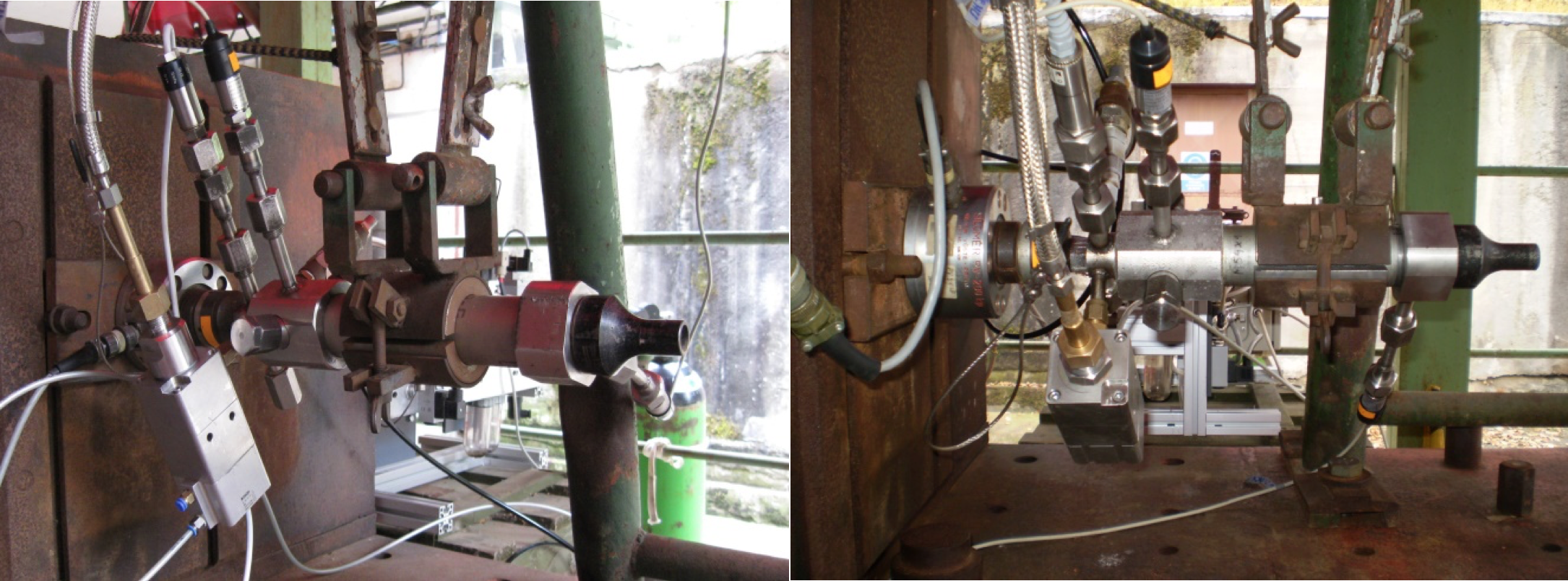
Fig.10 – Hybrid rocket test bed in VÚPCH, Pardubice – Semtín.
Some videos from testing are visible here – https://www.youtube.com/watch?v=KdQyYH-peS8
https://www.youtube.com/watch?v=LhfqX8BJ26U
Tested wax composition is described here – http://aimt.unob.cz/articles/09_02/09_02%20(1).pdf
To be independent from government of another country, we decided to build our rocket motor test facility here in Slovakia.
The mobile rocket motor test bed (Fig. 11) will be an integral part of the mobile ramp on a special trailer (Fig. 12). The purpose of the device will be static tests of rocket motors in an outdoor, protected environment. It consists of a solid frame, an support system for rocket engine, anchoring, devices for measuring forces, pressures and temperatures of certain components of the propulsion unit, the main (N2O) and auxiliary media (compressed oxygen, nitrogen, ev.helium). These media serve both for the direct operation of the rocket motor and for the pneumatic valve and auxiliary valves operating system. Nitrogen will serve to quench the engine after shutting down. The whole system must be autonomous, remotely controlled, along with a record of measured data. Max. 25kN thrust of tested rocket engine is possible (for rocket to 120km). Because we do not have racks or large uninhabited areas directly, it is necessary to build a mobile launch pad that will also be a static rocket test bed. Probably, taking into account the minimum dimensions of the device for maximum system flexibility. The system of stackable struts allows the fork-lift truck to be quickly disconnected from the ramp (in the case of more risky start-ups or if a solid starting surface is available).
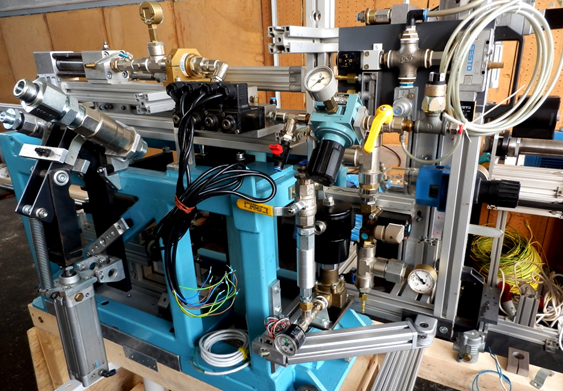
Figure 11 – Overview of universal mobile test equipment for rocket motors
The decision was made to have the new trailer manufactured, exactly according to our requirements – see Figure 12. The original two-axle chassis has been changed to one axle for better handling, with the possibility of using different towing vehicles. Due to the required flexibility of the system, a modified ramp structure was used to remove the trailer from the test area, both in engine tests and in the firing. At the moment, the mechanical problems of the launcher and the ramp itself are being worked on.


Figure 12 – 3D models of mobile rocket test bed and launcher
Let me also give special thanks to the Slovak Organisation for Space Activities (SOSA) leadership – Miška Musilová, Jakub Kapuš, Boris Fugger and others I probably do not have to stand up for and many other supporters, who will surely come up with advice in future articles and presentations about this interesting project. Perhaps I thank the Patrick Hessel from C2i company for help. Now let me introduce you to dear readers those people without whom it probably would not work:
 Gúnya Zoltán – graduate of the secondary industrial school in Komárno, department of engineering – graphic systems. He is a major contributor to CAD / CAM development for 3-axis and 5-axis machining centers. His contribution is invaluable in the production of machine parts for the project, the experienced prototype, has a lot of experience in the production of metal molds and various specialized products.
Gúnya Zoltán – graduate of the secondary industrial school in Komárno, department of engineering – graphic systems. He is a major contributor to CAD / CAM development for 3-axis and 5-axis machining centers. His contribution is invaluable in the production of machine parts for the project, the experienced prototype, has a lot of experience in the production of metal molds and various specialized products.
 Bohuslav Chrenko Ing. – co-founder of the Slovak Society for Space Activities (SOSA), graduate of the Slovak Technical University, Faculty of Material and Technology in Trnava – management of industrial enterprises, currently the company manager. A promoter and a contributor to the project, he is very helpful in the organizational sphere and he is very much at the heart of the development of space-related products in Slovakia.
Bohuslav Chrenko Ing. – co-founder of the Slovak Society for Space Activities (SOSA), graduate of the Slovak Technical University, Faculty of Material and Technology in Trnava – management of industrial enterprises, currently the company manager. A promoter and a contributor to the project, he is very helpful in the organizational sphere and he is very much at the heart of the development of space-related products in Slovakia.
 Farský Juraj Ing. – graduate of the Slovak Technical University – Faculty of Mechanical Engineering with focus on production automation systems. He has many years of experience in research, the development of oversized metal welded structures and the drawing documentation. He is currently working on the development of a mobile missile test bed and rocket launcher
Farský Juraj Ing. – graduate of the Slovak Technical University – Faculty of Mechanical Engineering with focus on production automation systems. He has many years of experience in research, the development of oversized metal welded structures and the drawing documentation. He is currently working on the development of a mobile missile test bed and rocket launcher
 František Samseli – a graduate of the Secondary Industrial School in Frýdek-Místek in the Czech Republic – Mechanic of Machines and Equipment. He is a modeling specialist, specialized in the production of aeronautical RC models and drone, has extensive experience in the production of modern composite parts, is currently leading the prototype production and development of new technologies in the field of composite production. He works on carbon fiber A2 rocket troops, so we all hold his thumb. 🙂
František Samseli – a graduate of the Secondary Industrial School in Frýdek-Místek in the Czech Republic – Mechanic of Machines and Equipment. He is a modeling specialist, specialized in the production of aeronautical RC models and drone, has extensive experience in the production of modern composite parts, is currently leading the prototype production and development of new technologies in the field of composite production. He works on carbon fiber A2 rocket troops, so we all hold his thumb. 🙂
 Bence Nagy – student of the 3rd year of the Slovak Technical University – Faculty of Mechanics with focus on Applied Mechanics and Mechatronics. Intensively assists in the production of positive models for the A2 missile and various preparations, currently solving as a semester work modeling of suborbital flight racks in Matlab / Simulink programs. It also deals with aerodynamics and various forces on racket bodies, ie outer ballistics.
Bence Nagy – student of the 3rd year of the Slovak Technical University – Faculty of Mechanics with focus on Applied Mechanics and Mechatronics. Intensively assists in the production of positive models for the A2 missile and various preparations, currently solving as a semester work modeling of suborbital flight racks in Matlab / Simulink programs. It also deals with aerodynamics and various forces on racket bodies, ie outer ballistics.
 Piatka Michal Bc. – a graduate of the Slovak Technical University – Faculty of Chemical Technologies, owner of Carbon Technic in Pezinok . Specialist for winding systems mainly using carbon fiber. It is a key technology for ultra-light pressure vessels for rocket technology. It co-generates and develops single-purpose machines for the technology – thumbs up!
Piatka Michal Bc. – a graduate of the Slovak Technical University – Faculty of Chemical Technologies, owner of Carbon Technic in Pezinok . Specialist for winding systems mainly using carbon fiber. It is a key technology for ultra-light pressure vessels for rocket technology. It co-generates and develops single-purpose machines for the technology – thumbs up!
 Miroslav Rozložník PhD. – graduate of the Faculty of Natural Sciences of Comenius University – biologist, applied research. Pedagogue, diver, professionally deals with the impact of extreme environment on the human organism (hyperbaric environment, impact of extreme heights). In the Ardea project, the contributor is also a supporter. In the project, it deals with the chemical composition of wax fuel for a hybrid rocket engine and the technology of wax filling production into the combustion chamber.
Miroslav Rozložník PhD. – graduate of the Faculty of Natural Sciences of Comenius University – biologist, applied research. Pedagogue, diver, professionally deals with the impact of extreme environment on the human organism (hyperbaric environment, impact of extreme heights). In the Ardea project, the contributor is also a supporter. In the project, it deals with the chemical composition of wax fuel for a hybrid rocket engine and the technology of wax filling production into the combustion chamber.
… and something about the author …
 Csaba Boros Ing.PhD. – graduate of the Aerospace Institute of the Faculty of Mechanical Engineering in Brno, doctor of hybrid rocket propulsion at the University of Defense in Brno. I worked for both the aerospace and the automotive industry, in the field of design of single-purpose machines and equipment, transport technology and in the production of composite parts.
Csaba Boros Ing.PhD. – graduate of the Aerospace Institute of the Faculty of Mechanical Engineering in Brno, doctor of hybrid rocket propulsion at the University of Defense in Brno. I worked for both the aerospace and the automotive industry, in the field of design of single-purpose machines and equipment, transport technology and in the production of composite parts.